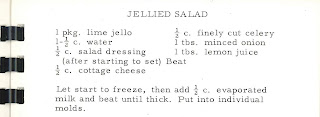 Dartmouth has long been a respected academic institution, rewarding its students with knowledge, new experiences and even some enjoyable social events. However, food may be the unsung hero of the Dartmouth experience. Hanover has created dozens of cookbooks over the last century, providing crucial instructions on how to feed the ever-hungry college student or Dartmouth-graduate.
Dartmouth has long been a respected academic institution, rewarding its students with knowledge, new experiences and even some enjoyable social events. However, food may be the unsung hero of the Dartmouth experience. Hanover has created dozens of cookbooks over the last century, providing crucial instructions on how to feed the ever-hungry college student or Dartmouth-graduate.The White Church Women's Association in Hanover published the first Hanover cookbook, Recipes, in Rauner's collection in 1928. The 1920's woman was more resourceful than the twenty-first century cook, with an entire section dedicated to the uses for sour milk. Still, quality and ingenuity can go hand in hand. I would personally advocate for the increased twenty-first century consumption of "Rinktum Tiddy" and a dessert called "Hermits," based on their names alone.
 By the 1950s, Hanover had apparently taken a turn for the health conscious. The 1950 cookbook of Hanover’s Favorite Recipes, compiled by the Grafton Star Grange, dedicates a large section to weight control. While the "Eighteen Day Reducing Diet" and the "Body Building and Weight Gaining Diet" don’t exactly fit modern day nutritional guidelines, they show a college town increasingly concerned with their waistlines. The cookbook even contains a weight chart, showing the correct correlation between "Weight in Pounds (With Regular Clothes)" and "Height (with shoes on)."
By the 1950s, Hanover had apparently taken a turn for the health conscious. The 1950 cookbook of Hanover’s Favorite Recipes, compiled by the Grafton Star Grange, dedicates a large section to weight control. While the "Eighteen Day Reducing Diet" and the "Body Building and Weight Gaining Diet" don’t exactly fit modern day nutritional guidelines, they show a college town increasingly concerned with their waistlines. The cookbook even contains a weight chart, showing the correct correlation between "Weight in Pounds (With Regular Clothes)" and "Height (with shoes on)."In the 1960s, Dartmouth began to celebrate its perceived culinary expertise. The Dartmouth Women's Club wrote in the introduction of Favorite Dartmouth Recipes that, "much of the excellence that is Dartmouth is largely due to the fact that the wives and mothers of Dartmouth men are superb cooks." Viewing the recipes from the 1960s, a modern reader may question this claim. While many of the food creations in the 1961 College Town Cook Book and 1967 Tuck-Thayer Wives Club are likely delicious, a distinct handful would likely not agree with the stomachs of Dartmouth students in 2013. One major objection: the incredibly common use of Jell-O in any dish. From salads to meal loafs, gelatin seems to have been the go-to ingredient in Hanover and Dartmouth kitchens in the 1960s.
Cookbook creation has lagged in recent years. With coeducation, the College began to emphasize women's roles outside of wives, mothers and chefs. Nonetheless, there continue to be notable contributions to Dartmouth's cookbook collection. One such example is the Handel Society’s Culinary Notes, published in 1987. Each recipe in the book, published to support the musical ensemble founded in 1807, specifies not only the hometown of each recipe's author, but also his or her vocal part.
Posted for Kate Taylor '13


No comments :
Post a Comment